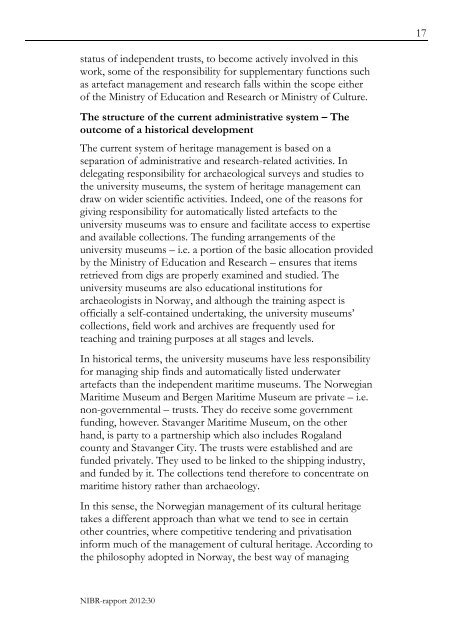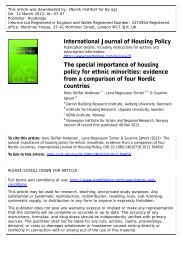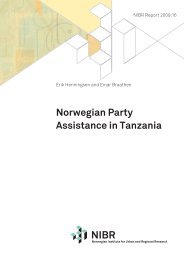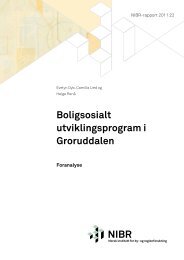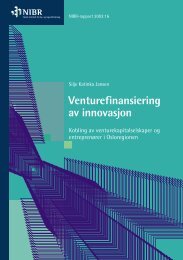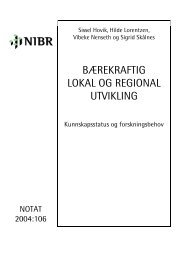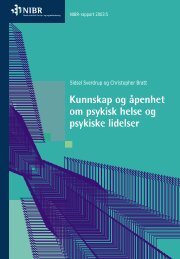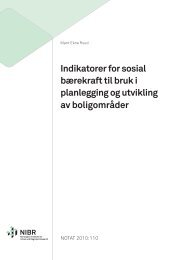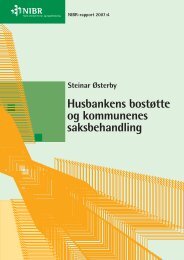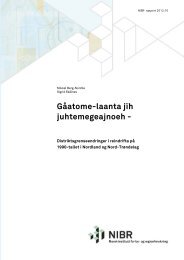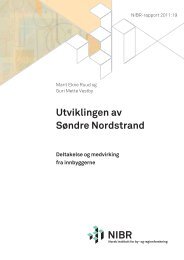Forvaltningsmuseenes og NIKUs ansvar og roller i forvaltningen av ...
Forvaltningsmuseenes og NIKUs ansvar og roller i forvaltningen av ...
Forvaltningsmuseenes og NIKUs ansvar og roller i forvaltningen av ...
- No tags were found...
You also want an ePaper? Increase the reach of your titles
YUMPU automatically turns print PDFs into web optimized ePapers that Google loves.
17status of independent trusts, to become actively involved in thiswork, some of the responsibility for supplementary functions suchas artefact management and research falls within the scope eitherof the Ministry of Education and Research or Ministry of Culture.The structure of the current administrative system – Theoutcome of a historical developmentThe current system of heritage management is based on aseparation of administrative and research-related activities. Indelegating responsibility for archaeol<strong>og</strong>ical surveys and studies tothe university museums, the system of heritage management candraw on wider scientific activities. Indeed, one of the reasons forgiving responsibility for automatically listed artefacts to theuniversity museums was to ensure and facilitate access to expertiseand <strong>av</strong>ailable collections. The funding arrangements of theuniversity museums – i.e. a portion of the basic allocation providedby the Ministry of Education and Research – ensures that itemsretrieved from digs are properly examined and studied. Theuniversity museums are also educational institutions forarchaeol<strong>og</strong>ists in Norway, and although the training aspect isofficially a self-contained undertaking, the university museums’collections, field work and archives are frequently used forteaching and training purposes at all stages and levels.In historical terms, the university museums h<strong>av</strong>e less responsibilityfor managing ship finds and automatically listed underwaterartefacts than the independent maritime museums. The NorwegianMaritime Museum and Bergen Maritime Museum are private – i.e.non-governmental – trusts. They do receive some governmentfunding, however. St<strong>av</strong>anger Maritime Museum, on the otherhand, is party to a partnership which also includes R<strong>og</strong>alandcounty and St<strong>av</strong>anger City. The trusts were established and arefunded privately. They used to be linked to the shipping industry,and funded by it. The collections tend therefore to concentrate onmaritime history rather than archaeol<strong>og</strong>y.In this sense, the Norwegian management of its cultural heritagetakes a different approach than what we tend to see in certainother countries, where competitive tendering and privatisationinform much of the management of cultural heritage. According tothe philosophy adopted in Norway, the best way of managingNIBR-rapport 2012:30


